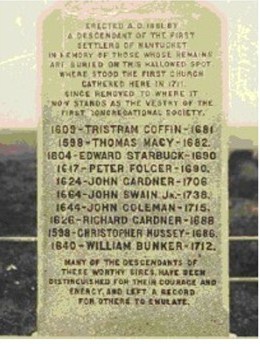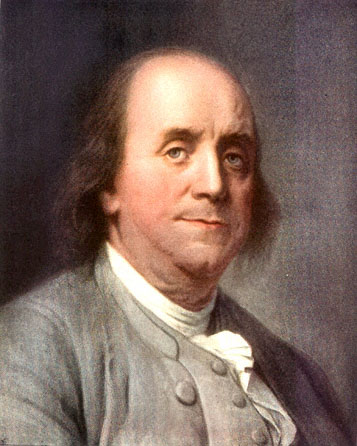Edward Starbuck (The Anabaptist)
Edward Starbuck, a native of Derbyshire, England, migrated to America after marrying his wife (of Wales). He settled at Dover, now in New Hampshire but then a part of the Province of Massachusetts Bay. The first mention made of him on the record is in 1643 when he is recorded to have received "a grant of forty acres of land on each side of the Fresh River at Cutchechoe."
On the 20th, 2 mo. 1644 it was ordered that Mr. Edward Starbuck, Richard Walderne & Wm. Furber be wearesmen for Cotcheco fall & river during their lives or so long as inhabitants. Various other grants were made to him, two of those being one of the Mill privilege at Cutchechoe 2nd Falls and one of timber to 'accomodate' in 1650. In "Landmarks in Ancient Dover" mention is made of Starbuck's Brook in 1701 as a boundary of property which Peter Coffin (son-in-law of Edward) conveyed to John Ham. Starbuck's Marsh was granted to Edward August 30, 1643, and Starbuck's Point and Marsh, now called Fabyan's Point, were granted to Edward in 1643. He is recorded several times as called on to be one of the "lot-layers." He was Representative in the General Court in 1643 and 1646, was an Elder in the church and in other ways enjoyed the respect and esteem of his fellow-citizens. In 1640, Edward was an agent for Mr. Valentine Hill and Partner with Richard Waldron in lumbering on the Me. side in 1648. In 1653 he sold 1/2 his sawmill gr. To Peter Coffin, in 1657 sold to Thomas Broughton 1/4 the mill above Capt. Waldron's mill at Cochecho.
In 1644 an act was passed by the General Court of Massachusetts Bay banishing from the Colony all who should either openly or privately oppose the baptism of infants. While the punishment meted out to some of the offenders was severe, banishment was not always inflicted. Edward Starbuck was one of those who subscribed to the proscribed doctrine and the record of the General Court, under the date of 18 October 1648, says: "This Court, being informed of great misdemener committed by Edward Starbucke, of Douer, with p'fession of Anabaptisme, for which he is to be p'ceeded agaynst at the next Court of Assistants, if evidence can be p'pared by that time, & it beinge very farre for wittnesses to travill to Boston at that season of the yeare, it is therefore ordered by this Court that the secritary shall give commission to Capt. Thomas Wiggan & Mr. Edw. Smith to send for such p'rsons as they shall haue notice of which are able to testifie in the s'd cause & to take theire testimonie uppon oath & certifie the same to the secritary so soone as may be, that further p'ceedings may be therein if the cause shall so require."
There seems to be no indication from the record that the complaint was prosecuted, notwithstanding the severe penalty contemplated by the law. The action of the Court did not seem to affect his standing in his community for he continued to be called upon to lay out land.
He accompanied Tristram Coffin on his voyage of discovery and Thomas Macy on his voyage of settlement. He deeded his Cochecho house, goods, cattle, etc. to his son-in-law Coffin on 9 Mar. 1659-60 and moved to Nantucket where he died. Dover lost a good citizen and Nantucket gained a much respected one; He was a leading man on the Island and at one time a Magistrate. He is described as courageous and persevering. When he came to the Island he occupied a house which he built at Madeket. His house lot as laid out was about 1000 feet square, extending northward from the head of Hummock Pond to Macy's Pond.
Edward's influence over the Indians was so great that if at any time a suspicion or alarm arose among the early settlers, he was always in requisition to explain the apparent cause thereof, and to suggest a palliation for their rude and inexplicable action, which served to allay the fears of the more timid. That he was well esteemed among the Indians is evidenced by the deeding of Coatue to him by Wannackmamack and Nicanoos (of the Sachem Indians) "of our free and voluntary willes."

